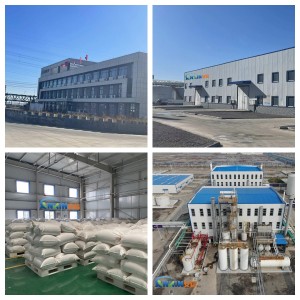Hydroxypropyl methylcellulose (HPMC) is a nonionic cellulose ether widely used in building materials, pharmaceutical preparations, food additives, cosmetics, and daily chemicals. As a multifunctional polymer, its performance is closely related not only to the degree of substitution, viscosity, and purity, but also to its moisture content. Moisture content is a key indicator of HPMC’s quality and stability, directly impacting its storage, processing, and application.
1. HPMC Moisture Content Range
Generally speaking, HPMC has a low moisture content, typically between 3% and 6%. This range may vary slightly depending on the manufacturer and grade, but most international and domestic standards stipulate that the upper limit for HPMC moisture content is ≤5% to 8%.
Pharmaceutical-grade HPMC: Moisture content requirements are typically more stringent, generally controlled at ≤5% to ensure the stability and safety of pharmaceutical formulations.
Construction-grade HPMC: For use in tile adhesives, putty powder, and gypsum products, the moisture content is generally controlled at ≤6% to ensure good storage and application performance.
Food-grade HPMC: The moisture content also needs to be kept low to prevent clumping and microbial growth during storage.
2. Moisture Content Testing Methods
The following methods are commonly used to test the moisture content of HPMC:
2.1. Loss on Drying (LOD)
Dry a sample at 105°C ± 2°C to constant weight. The weight loss is measured, which represents the moisture content.
This is the most common and standard method, applicable to all HPMC products.
2.2. Infrared Moisture Meter
Using infrared heating, this method rapidly measures the moisture content of a sample and is suitable for rapid quality control during production.
2.3. Karl Fischer Titration
This method offers higher precision and is particularly suitable for pharmaceutical-grade HPMC with low moisture content or where moisture control is critical.
3. Factors Affecting HPMC Moisture Content
3.1. Production Process
During the etherification reaction and drying process, conditions such as temperature, time, and vacuum level affect the moisture content of the final product.
3.2. Storage Conditions
HPMC is hygroscopic. If stored in a humid environment, the moisture content will increase, causing the powder to agglomerate and reducing fluidity.
3.3. Product Particle Size
Fine powdered HPMC is more hygroscopic than granular HPMC, so the moisture content may be slightly higher.
3.4. Packaging
Packaging in double-layer plastic bags lined with kraft paper bags effectively blocks moisture from the air and improves stability.
4. Impact of Moisture Content on Application Performance
4.1. Construction Applications
HPMC with excessively high moisture content tends to agglomerate, resulting in poor dispersion during application, affecting dissolution rate and adhesive properties.
Controlling the moisture content within a reasonable range maintains excellent water retention, thickening, and fluidity.
4.2. Pharmaceuticals
In tablet coatings or controlled-release formulations, excessively high HPMC moisture content may affect the drug’s dissolution profile and stability.
Excessively low HPMC moisture content can easily lead to brittle cracking and affect film quality.
4.3. Food and Cosmetics
Well-controlled moisture content prevents microbial contamination and ensures product safety and aesthetic quality.
5. Industry Standards and Regulations
The Chinese Pharmacopoeia (ChP), the United States Pharmacopoeia (USP), and the European Pharmacopoeia (EP) all have clear requirements for the moisture content of HPMC, typically ≤5%.
Construction industry standards (such as JC/T 1024, “Cellulose Ethers for Dry-Mix Mortars in Construction”) generally require a moisture content of ≤6% for HPMC.
Food additive standards (such as the FAO/WHO “Food Chemicals Codex”) also set moisture content limits to ensure stability.
The moisture content of HPMC is typically controlled between 3% and 6%, with varying standards for different applications. The appropriate moisture content not only maintains the good powder state and processing performance of HPMC, but also prolongs the storage period and ensures the application effect. For users, selecting products that meet the standards and paying attention to moisture protection during transportation and storage are the key to ensuring the performance of HPMC.
Post time: Sep-17-2025








